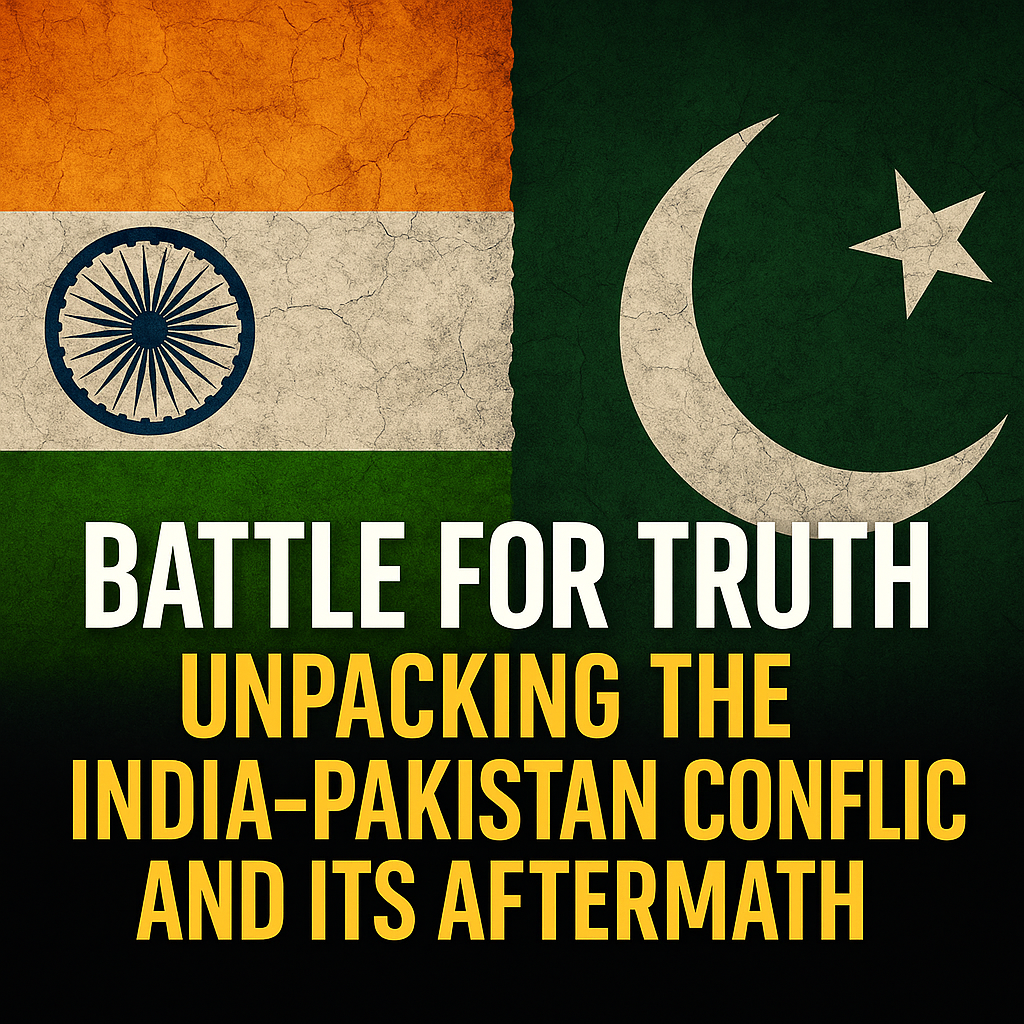“Nuclear Brinkmanship Exposed: The Untold Story Behind Trump’s Ceasefire Deal”
In May 2025, South Asia witnessed a rapid escalation of tensions between India and Pakistan, culminating in a brief but intense military confrontation. The conflict, rooted in longstanding disputes and recent provocations, has sparked divergent narratives from both nations, each claiming moral and strategic superiority.
Genesis of the Conflict: The Pahalgam Attack
The immediate trigger for the confrontation was a terrorist attack on April 22 in Pahalgam, Indian-administered Kashmir, resulting in the deaths of 26 civilians, predominantly Hindu tourists. India attributed the attack to Pakistan-based militant groups, specifically Lashkar-e-Taiba, alleging state sponsorship from Islamabad. Pakistan, however, denied any involvement, labeling the accusations as baseless. (Wikipedia, The Guardian)
India’s Response: Operation Sindoor
In retaliation, India launched “Operation Sindoor” on May 7, targeting what it described as terrorist infrastructure within Pakistan. The operation involved missile strikes aimed at dismantling militant camps, with India asserting that no Pakistani military facilities were targeted. (www.ndtv.com, Wikipedia)
Prime Minister Narendra Modi, in a national address, emphasized India’s resolve against terrorism, stating that the country would not tolerate “nuclear blackmail” and that any future dialogue with Pakistan would focus solely on terrorism and Pakistan-occupied Kashmir. (Indiatimes)
Pakistan’s Counter-Narrative: Operation Bunyan-e-Marsous
Pakistan responded with its own military operation, “Operation Bunyan-e-Marsous,” claiming to have successfully repelled Indian aggression. According to Pakistani sources, their forces conducted precision strikes on Indian air bases and executed significant cyberattacks, which they described as the largest in history. Pakistan’s leadership portrayed this as a decisive victory, asserting that India was forced to seek a ceasefire. (Daily Times)
Deputy Prime Minister and Foreign Minister Ishaq Dar led a diplomatic offensive to present Pakistan’s case internationally. However, Dar faced criticism for citing a fabricated article purportedly from a UK newspaper praising the Pakistani Air Force, which was later debunked by local media and fact-checkers. (Daily Times, www.ndtv.com)
Ceasefire and International Mediation
Amid escalating hostilities, a ceasefire was brokered on May 10, reportedly facilitated by U.S. President Donald Trump. While both nations agreed to halt military actions, the underlying tensions remained unresolved. Analysts suggest that the ceasefire was more a pause than a resolution, with both sides preparing for potential future confrontations. (Financial Times, www.ndtv.com)
Dueling Narratives and the Battle for Perception
The conflict has underscored the importance of narrative in modern warfare. India emphasized its stance against terrorism and portrayed its actions as measured responses to provocations. Conversely, Pakistan framed its response as a defense of sovereignty and a demonstration of military prowess.
Media outlets and political leaders in both countries have reinforced these narratives, aiming to shape domestic and international perceptions. The dissemination of unverified or fabricated information, such as the debunked UK newspaper article, highlights the challenges in discerning truth amid propaganda.
Conclusion: A Fragile Peace and Ongoing Tensions
The May 2025 conflict between India and Pakistan serves as a stark reminder of the volatility in South Asia. While open hostilities have ceased, the underlying issues—territorial disputes, accusations of state-sponsored terrorism, and competing national narratives—persist. The international community’s role in mediating and encouraging dialogue remains crucial to preventing future escalations.(The Guardian)
